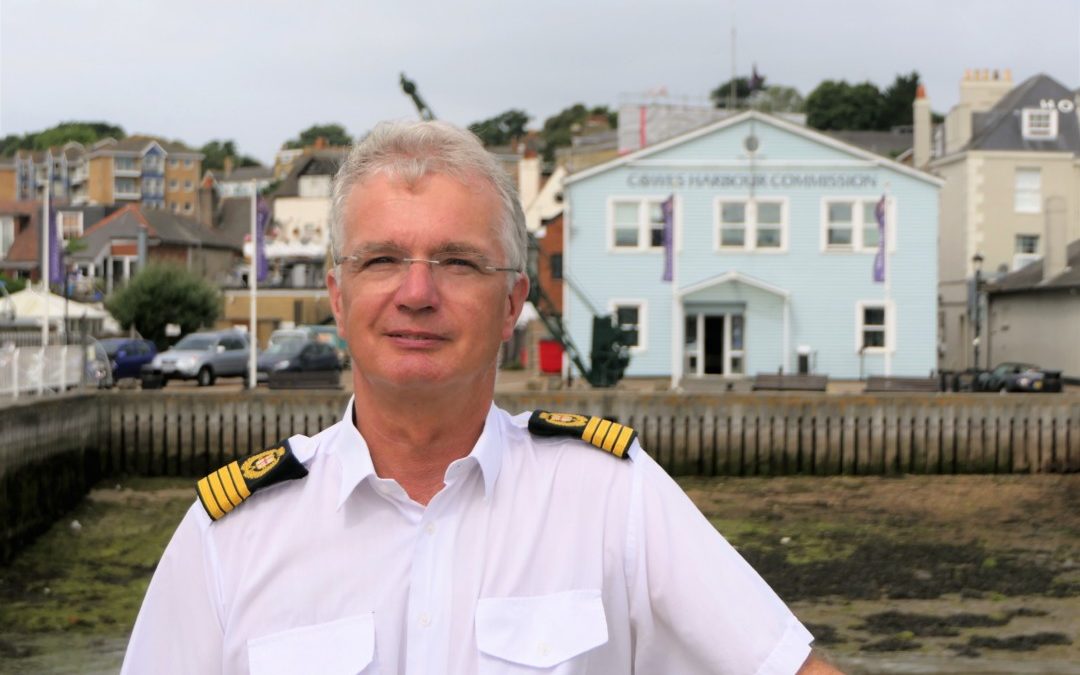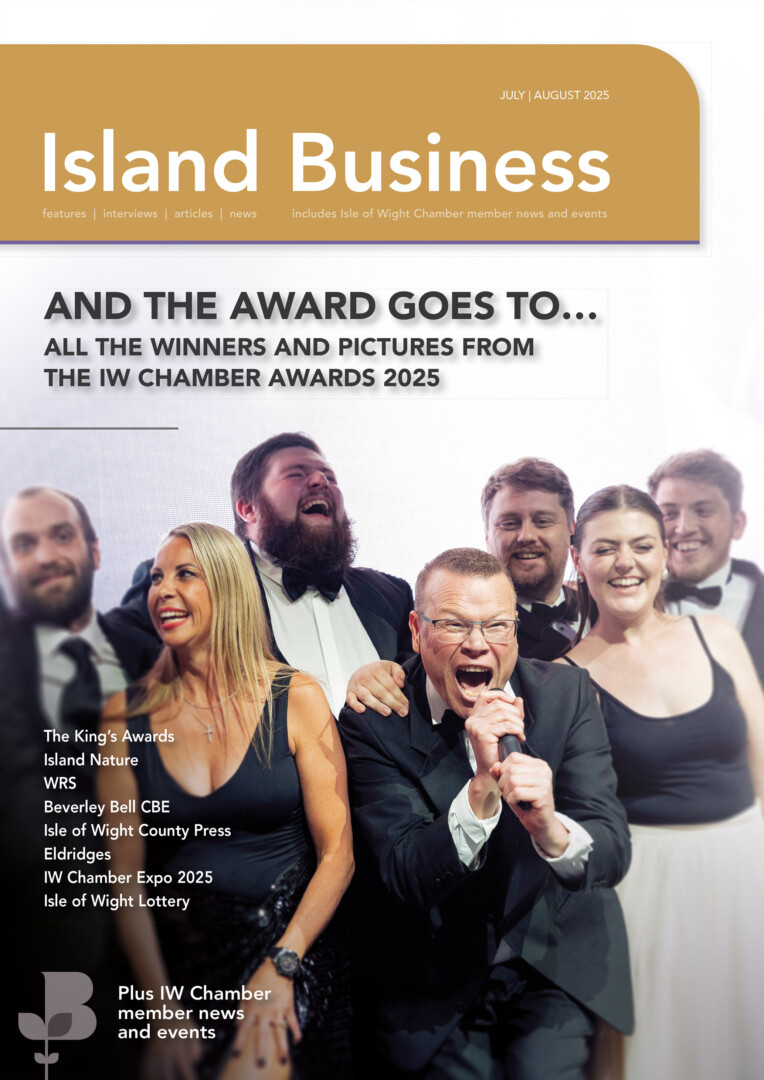Navigating a path to economic growth and protecting jobs: Harbourmaster Capt. Stuart McIntosh talks to Tom Stroud about how Cowes Harbour Commission (CHC) balances the views of stakeholders on “the main road into the Island.”
There’s a lot to talk about! With all of the development that is proposed for Cowes, your role and that of Cowes Harbour Commission has become increasingly important in recent years.
Yes. Whilst Cowes Harbour Commission is the statutory harbour authority and safety remains our priority, we also realise the importance of the harbour and Medina to the Island’s economy. Cowes Harbour and the River Medina are the main gateway and “economic engine” for the Isle of Wight. The harbour is also the main transportation gateway and the only deep water commercial port for the Island. We understand the importance of attracting new investment and sustainable development into the harbour and local economy and this is becoming an increasingly important role for the Commission.
In Cowes there’s the newly consented development on the Medina Yard and former Samuel White’s site. Over in East Cowes there’s the regeneration project that includes the Venture Quays site, Red Funnel ferry terminal, and planned Victoria Quay marina. There’s also the potential alternative marine employment site up at Whippingham, as well as the Kingston Wharf site that’s owned by CHC. Cowes could be looking very different in a few years.
Cowes Harbour has four strategically significant and interlinked marine employment sites currently proposed for development. The Island’s economy and property market are still at a different stage to Hampshire’s and some of the other southern counties so it is vital the right investment and development decisions are made for the Island. Promoting the right investment and development opportunities is key, as is securing certainty on delivery as one decision affects the next.
CHC has to maintain a balance between the main users of the harbour, including the ferries and commercial ships that transport all the bulk goods in and out of the Island. Cowes is world renowned for yachting and leisure, but this leisure sector is also a major economic driver for the Island. Yachtsmen are Island tourists with a relatively high spend and that creates jobs. The environment is also a major stakeholder. CHC has to effectively navigate our way through to deliver the right balance for Cowes, our economy and importantly, to sustain long-term marine employment for Islanders.
Are you optimistic that development in Cowes can happen without putting manufacturing jobs at risk?
I would say I’m cautiously optimistic. The Island has a tremendous pool of talent and experience in composites, aluminium, and shipbuilding, but there are pressures on the main strategic marine employment sites on the boundaries of the estuary. We are spending a lot of our time and effort playing our part in ensuring that marine employment is protected.
The Island needs to have these stable, long-term employers. Look at the track record of Wight Shipyard and Aluminium Marine Consultants. They have recently built the two new Red Jets, have orders for two more large fast ferries and potential orders from around the world. It’s essential they have secure tenure and sites for their shipbuilding facilities so that they can invest and secure these new contracts. The potential inward investment value on all these projects being negotiated is upward of £50 million, but for the Island it’s about providing security of employment.
Can the Kingston site at Whippingham accommodate the manufacturing sector?
We have always considered and argued that the Medina Yard / Harrison Trust site is the best marine employment site on the Island. This is due to its natural self-scouring deep water, all-tide river frontage, and that it’s an existing shipbuilding “brownfield” site.
So we opposed the recently awarded major development Medina Yard planning consent, based on CHC’s view that this is the best and most deliverable long-term marine employment site, combined with our reservations on the deliverability of the current proposed Medina “Village” development scheme.
However, we are committed to working with the Isle of Wight Council, government, developers and investors on all of the development sites to achieve the best, balanced outcome for the harbour and Island. Again, it’s key that these schemes can be delivered within an acceptable timeframe for the Island.
Do you have a vision for Cowes in the future? How do you think it should look?
We consider that the Inner Harbour area north of the Floating Bridge is the main gateway to the Island with the ferry transportation interchange. This same area is also where the leisure sector should be providing yachtsmen with the best possible marinas and boating facilities, and entrance to Cowes’ unique boutique shopping, food and leisure offers. The centre part of the river has the marine support units and we want to build on the thriving marine industry. Further south, into the Folly Reach, we have a beautiful natural environmental area that should continue to be protected.
The Island’s economy needs a fit-for-purpose ferry operation, so we need to support Red Funnel and their investment. CHC also needs to support the commercial shipping. It’s essential that Cowes continues to provide the yachting facilities to meet our customers’ expectations and this may include second homes for yachtsmen to make it more attractive to live here and invest on the Island.
CHC’s view is that Cowes must stay an active trading port and one that provides the right facilities for all harbour users. This is a real challenge and for CHC it all comes to back to balance, but Cowes and the Isle of Wight is a great place to live and work and therefore I remain very optimistic about the future for Cowes Harbour and the Island.



